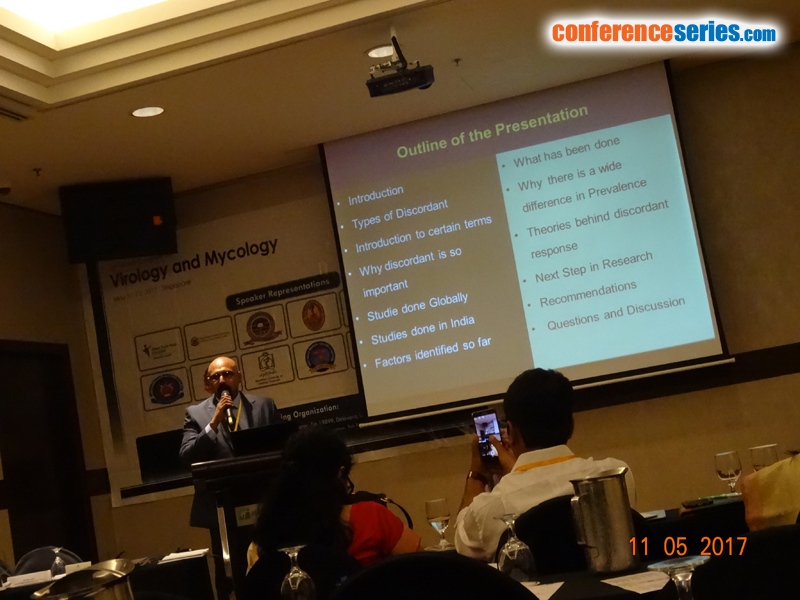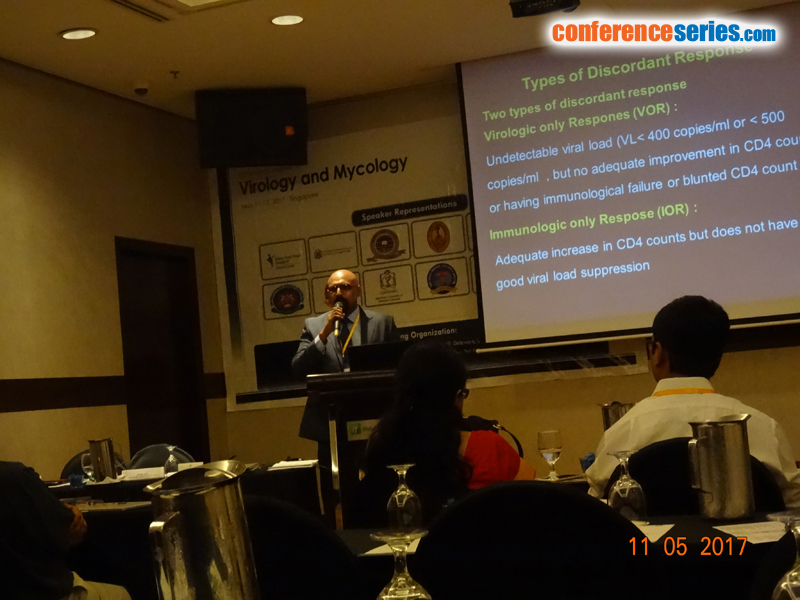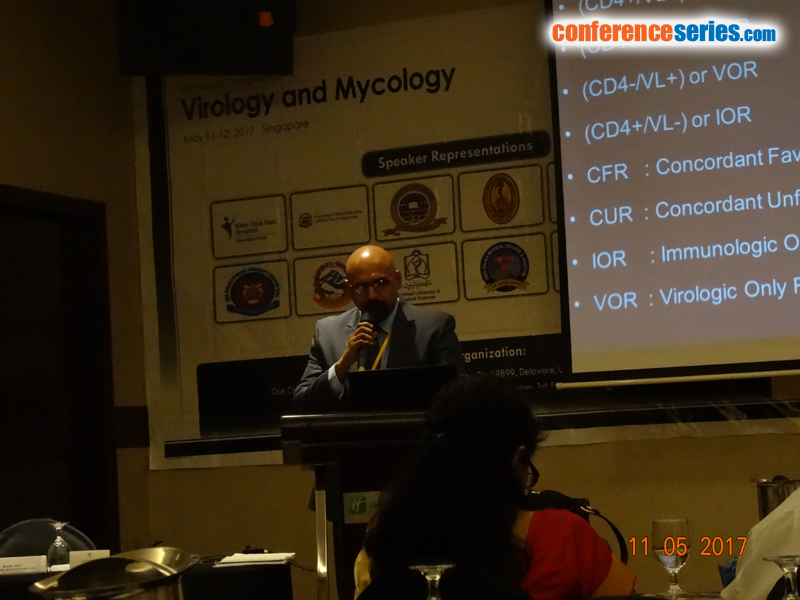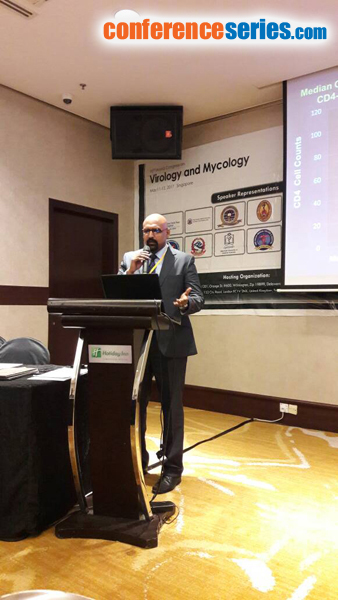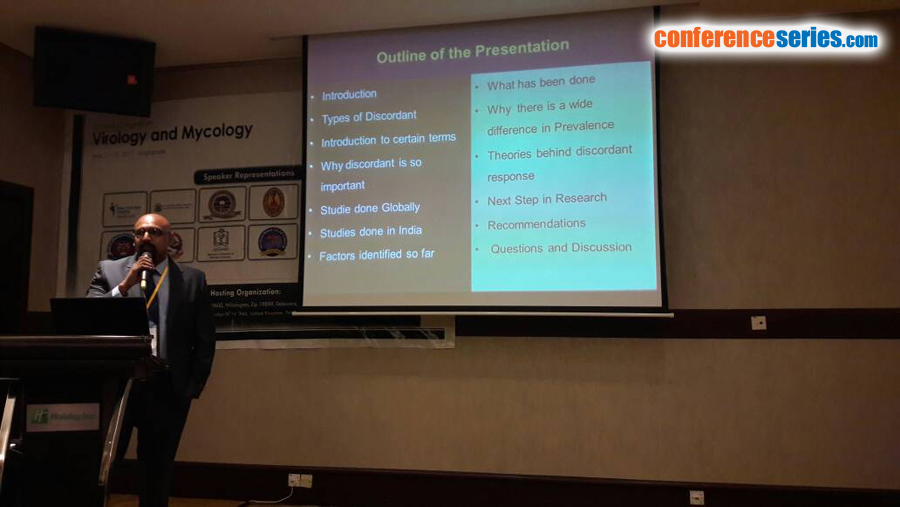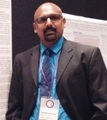
Ganesh Shanmugasundaram Anusuya
Sree Balaji Medical College and Hospital, India
Title: Immunological and virological discordance in patients on antiretroviral therapy: Still a grey area in HIV research
Biography
Biography: Ganesh Shanmugasundaram Anusuya
Abstract
Statement of the Problem : Effective ART generally results in immune reconstitution with increased CD4 and virologic suppression with undetectable HIV viral load (VL) . However a major concern regarding ART is when there is a discordant response between CD4 count and the viral load . There are two types of discordant responses : Immunological failure (decrease in CD4 count) despite VL suppression or immune reconstitution (increase in CD4 count) despite VL failure . Interestingly both types of discordant responses to ART are related to AIDS defining events and mortality .
Discussion : The discordant response to ART is still a grey area in HIV research .Several studies done around the world have shown the prevalence of discordance ranging from 8% to more than 20% .Several causes attributed for discordant response were Zidovudine based regimen , Protease inhibitors , older age , younger median age , lower baseline CD4 count , associated opportunistic infections and baseline viral loads. The wide differences in prevalence of discordance can be attributed to several factors including different criteria for immunological response , virologic suppression , sample size , variation in time to failure , ethnic background and importantly different types of ART regimens. We also recommend the global HIV related authorities to implement uniform guidelines for immunological and virological response , so that the wide difference attributed to the prevalence of discordance can be assessed and decided whether it is a true difference in prevalence .These discordant groups need to be carefully monitored for opportunistic infections and more studies are needed as to ways to improve the immunologic response in these patients and also to find out the exact cause of discordance . Further studies like exploring the genetic sequencing of this discordant group is required .


